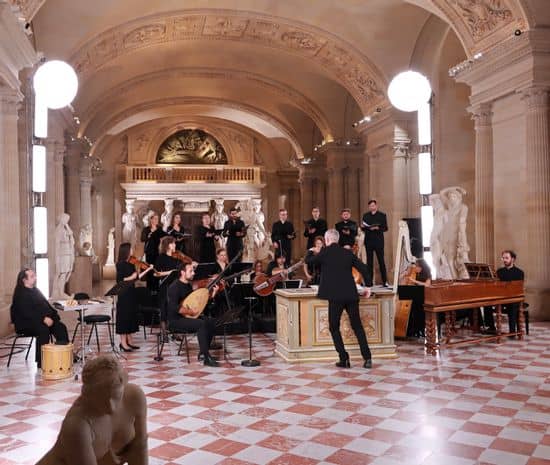Rome
A Palace in Rome
Commissioned by the Louvre Museum as part of an exhibition on the Carracci family in 2026, this program was conceived as a bridge between music and the arts. Indeed, at the end of the 16th century, musical life was in full swing. The circles of Florentine intellectuals and artists that had been active for decades gave creativity unprecedented freedom, and music was profoundly influenced by this. Inspired by Antiquity and theories reinterpreted in the light of Humanism, composers invented a new way of conveying emotions through voice and instruments. The idea of expressive, free, moving, and sung declamation took shape with the first recitatives. The accompaniment offered a new freedom, far from the regularity required by sacred polyphony. The emotions of the text took on a new dimension and carried the souls of the audience closer to the emotions conveyed by the poets and musicians. This revolution spread to Venice, Rome, and throughout Italy during the Seicento.
Rome quickly embraced this new style. While sacred music in the heart of Christendom remained conservative, particularly in its most venerable temples, the Sistine Chapel and the Giulia Chapel, the old polyphonic style endured (until today), and this new style spread throughout the city’s grandest venues, from the palaces of noble families to those of cardinals. The Farnese family palace, built by the future Pope Paul III at the end of the 15th century, mobilized the greatest architects of its time (Sangallo the Younger, Michelangelo, Della Porta). All the arts were called upon : painters, tapestry makers, goldsmiths, master glassmakers, sculptors… All contributed to making this palace one of the jewels of Rome. Over the centuries, the riches it housed became the sumptuous and legendary Farnese collection (the palace housed one of the most formidable collections of antiquities at the time in Rome).
Cardinal Eduardo Farnese commissioned the Bolognese painter Annibale Carracci to decorate the palace in 1595. The Palace Gallery, overlooking Via Giulia towards the Tiber, deserves special attention : it is a place for receptions and relaxation, ideal for concerts, where every detail is significant. The virtuosity of the composition is prodigious, evoking the mythology surrounding the loves of the gods, for which Ovid’s Metamorphoses is an inexhaustible source of inspiration. All these figures from Olympus, who appeared on the vaults at the beginning of the Seicento, formed a sublime assembly for the guests of the Farnese family to admire, probably to the sound of the music of their time: it is likely that this large gallery was dedicated to music (inventories mention the presence of instruments, and the Caracci worked on the decoration of harpsichords, now preserved in London, which are particularly linked to their work for the Farnese family).
This program invites visitors to walk through this gallery not by contemplating its vaults, but by listening to the sounds that these gods, painted by the Carracci, heard in the first decades of their existence. From Marenzio’s new madrigals at the end of the 17th century, contemporary with their appearance, to the great oratorios commissioned by the Roman cardinals from Luigi Rossi or Stefano Landi, these fifty years of music in Rome show that the virtuosity of drawing meets that of composition, combining depth and sensuality in a dizzying momentum that will be the symbol of the eternal city for a long time to come.
